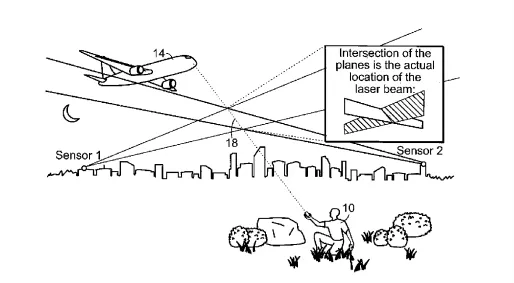Ground-Based System for Geolocation of Perpetrators of Aircraft Laser Strikes
This invention allows almost immediate geolocation of perpetrators of aircraft laser strikes.
Researchers
-
ground-based system for geolocation of perpetrators of aircraft laser strikes
United States of America | Granted | 10,718,613
Figures
Technology
The system for geolocation of a laser light source includes at least two spaced-apart ground-based sensors for receiving light from the laser source that has been off-axis scattered by air molecules and particulates to form imagery from the scattered light; and a processor operating on the scattered light imagery from the two sensors to locate the laser source. Post-event algorithms can be used to overlay laser beam direction with aircraft coordinates to aid prosecution activities.
Problem Addressed
Laser strikes against commercial aircraft are a growing problem in the United States. In the last decade there has been a large increase in the number of incidents reported to the Federal Aviation Administration, likely driven by the increasing availability of high power, low cost laser pointers. Reports increased rapidly in 2015, with 7,703 incidents compared to 3,894 in 2014. However, current responses to these incidents are limited. For persistent incidents in a given location, air traffic controllers may change departure and landing patterns to avoid areas where laser strikes have been reported. For more egregious incidents, police helicopters may be deployed to try and find the perpetrator on the ground using the helicopter’s onboard infrared sensors. This invention aims to reduce the number of attacks by allowing fast response times to incidents.
Advantages
- Automatic detection and geolocation
- Persistent protection of highly critical air space
- Strong deterrent effects
License this technology
Interested in this technology? Connect with our experienced licensing team to initiate the process.
Sign up for technology updates
Sign up now to receive the latest updates on cutting-edge technologies and innovations.
